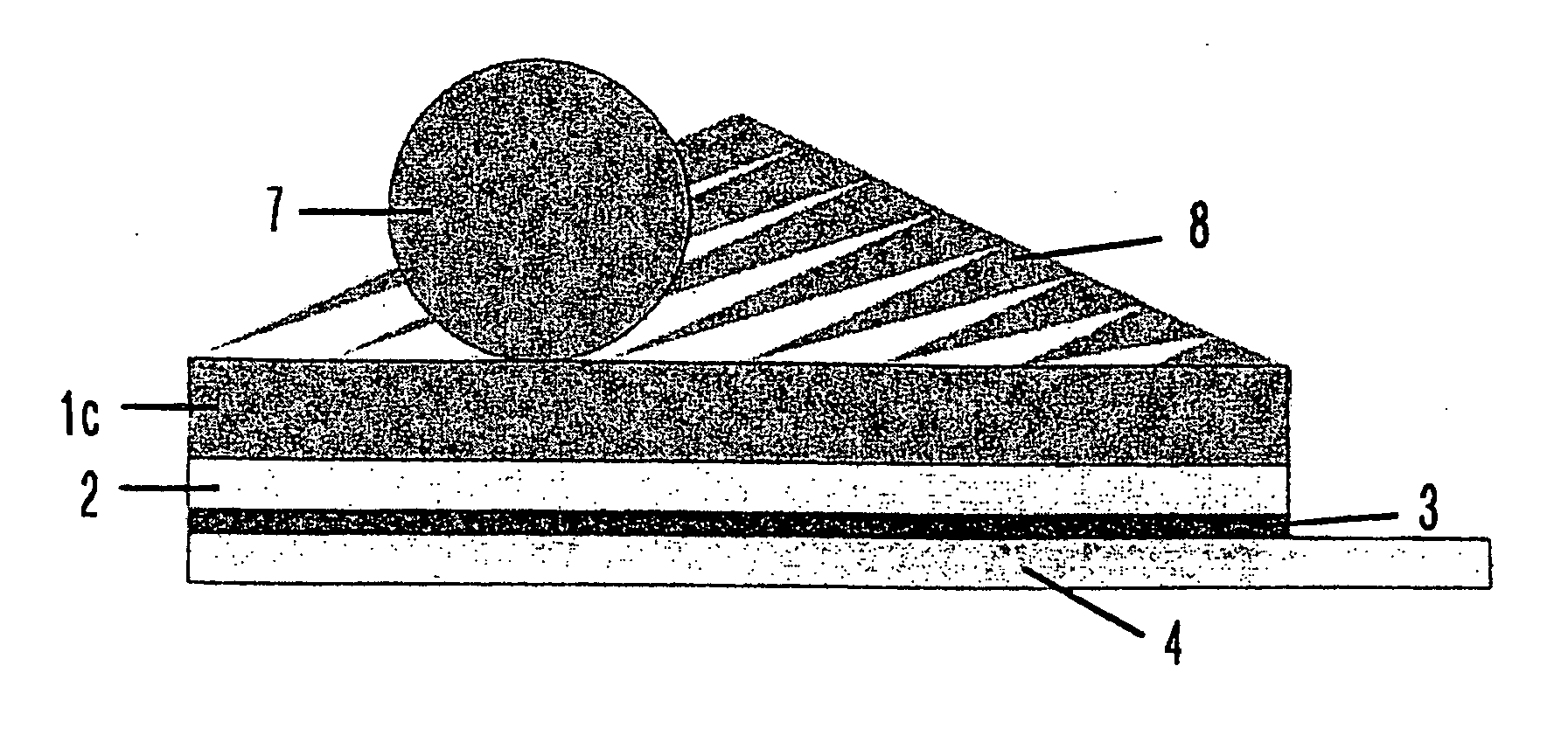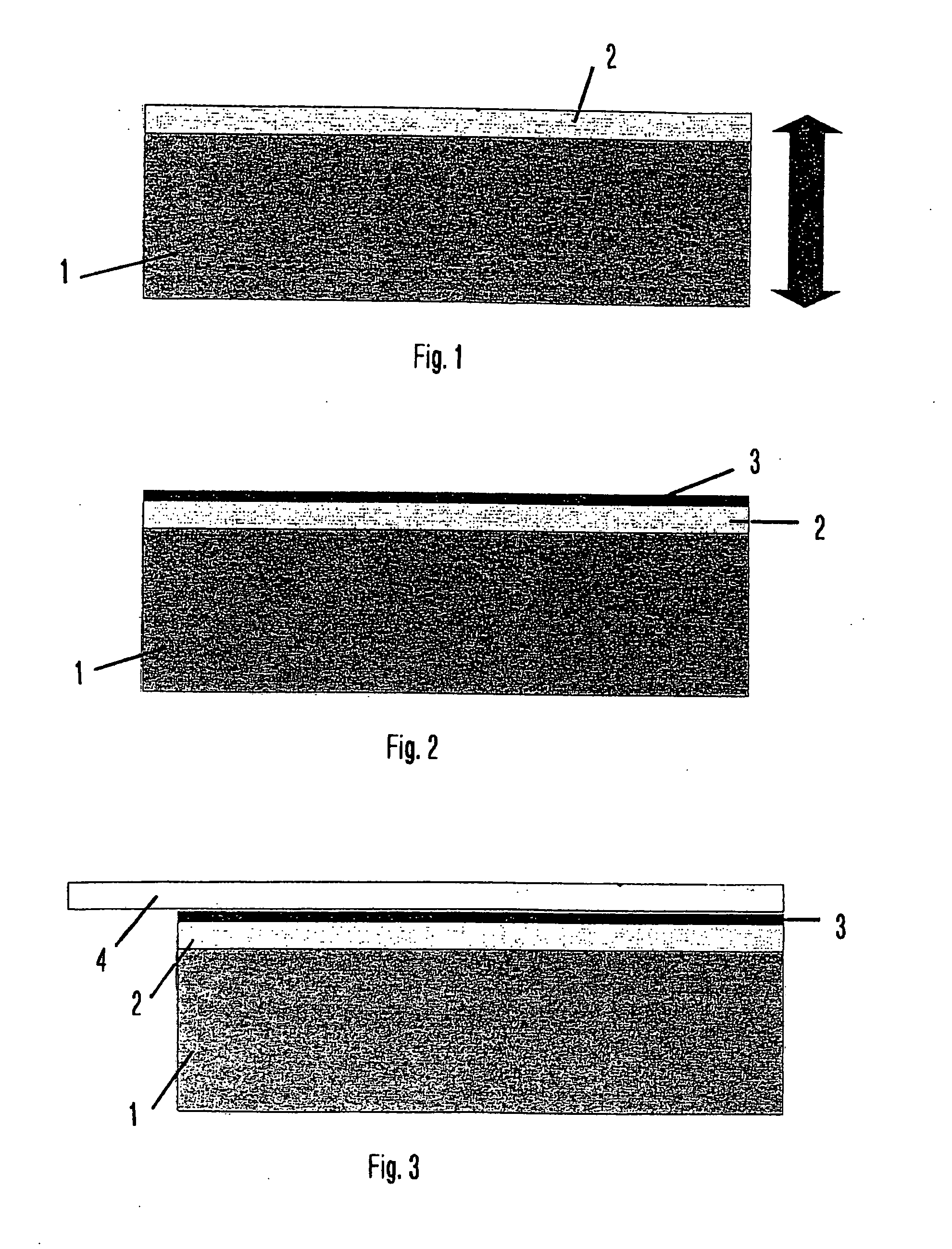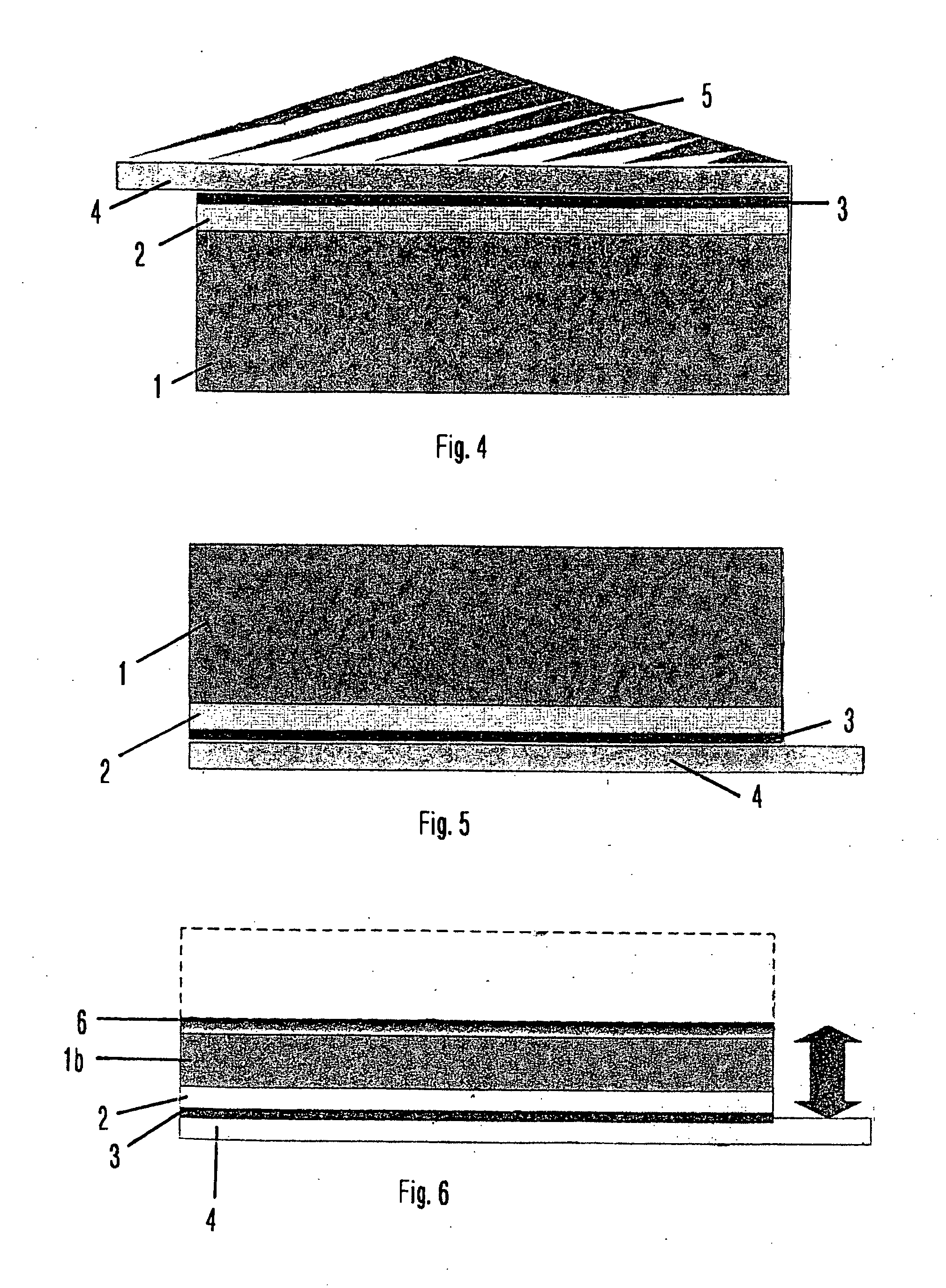Method and device for machining a wafer, in addition to a wafer comprising a separation layer and a support layer
a technology of separation layer and support layer, which is applied in the direction of solid-state device manufacturing, electric devices, semiconductor/solid-state device manufacturing, etc., can solve the problems of increasing the fragility and bend of thinned wafers, serious difficulties and challenges in subsequent treatment steps, and low thermal capacity, so as to reduce mechanical stresses, the adhesion and/or damping properties of the layer can be influenced and adjusted, and the effect of simplifying the coating of the rear sid
- Summary
- Abstract
- Description
- Claims
- Application Information
AI Technical Summary
Benefits of technology
Problems solved by technology
Method used
Image
Examples
example 2
[0125] It is preferred if the wafer to be thinned and divided has, within a fabrication process for the production of ICs, transistors, diodes, sensors, etc., already passed through the majority of the fabrication steps for the application of the electrical and mechanical structures (components) and layers. The wafer is now covered or coated on the upper side (the active side, i.e. the side on which the structures are situated) with an interlayer and / or a carrier layer. The layer and / or the layer composite with the wafer arranged thereon is fixed on a carrier, for example by means of a film, and / or is held in situ by means of a vacuum suction device. Following this the wafer is fed into a unit system. The treatment process for thinning the wafer then takes place. In this way the thickness of the wafer is reduced by means of known methods such as for example grinding, lapping and / or etching.
[0126] The wafer can be cleaned during or following this process step. In addition a chemical...
example 3
Application of an Interlayer as Gradient Layer Using a Liquid Precursor
[0192] A linear polydimethylsiloxane of chain length 50 (AK 50, Wacker Chemie) was used as liquid precursor, which was applied in a layer thickness of 50 nm uniformly to a silicon wafer to be treated. In preliminary tests the material AK 50 exhibited a high resistance in vacuo. The prepared wafer was then introduced into a plasma polymerisation unit and coated further, employing the parameters listed in Table 1. In this connection the wafer was covered with an auxiliary device during part 1 of the coating procedure, which was removed at the start of part 2. The covering served to produce stable plasma and gas conditions before the wafer was exposed to the plasma. Typically, a transient phase in fact occurs at the start of a plasma process, which can have undesirable influences on the interface and / or on the liquid precursor (see also above).
TABLE 1Parameters during deposition of the interlayer;total layer thic...
example 4
Application of an Interlayer Thinner than the Gradient Layer Using a Liquid Precursor
[0195] Procedure as in Example 3; parameters, see Table 2.
TABLE 2Parameters during deposition of the interlayer;total layer thickness: ca 160 nmGas 1Gas 2Gas 3[sccm][sccm][sccm]Gas typeOutputTimePressureHMDSOO2H2[W][sec][mbar]Part 170247009000.03Part 2702470018000.03Part 320090016001800.05Part 41000025001200.22
PUM
 Login to View More
Login to View More Abstract
Description
Claims
Application Information
 Login to View More
Login to View More - R&D
- Intellectual Property
- Life Sciences
- Materials
- Tech Scout
- Unparalleled Data Quality
- Higher Quality Content
- 60% Fewer Hallucinations
Browse by: Latest US Patents, China's latest patents, Technical Efficacy Thesaurus, Application Domain, Technology Topic, Popular Technical Reports.
© 2025 PatSnap. All rights reserved.Legal|Privacy policy|Modern Slavery Act Transparency Statement|Sitemap|About US| Contact US: help@patsnap.com



